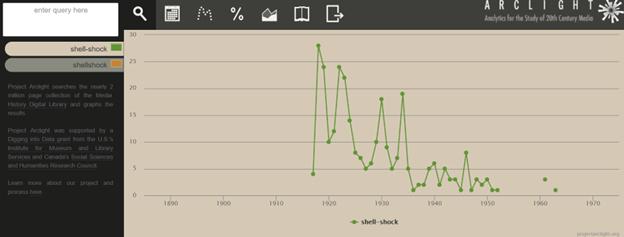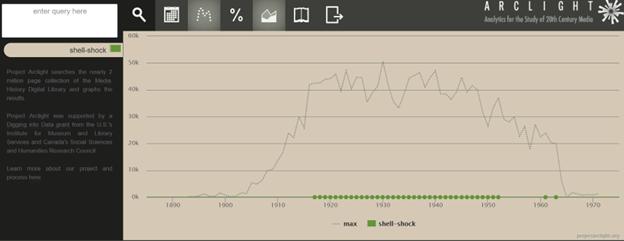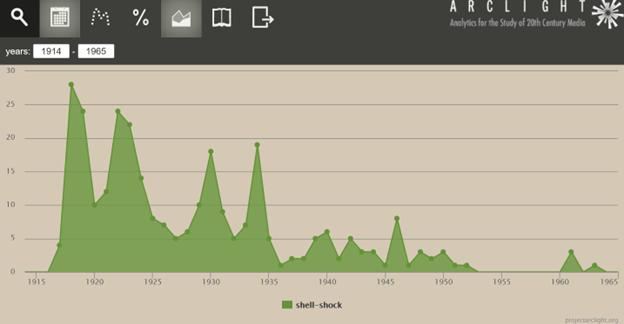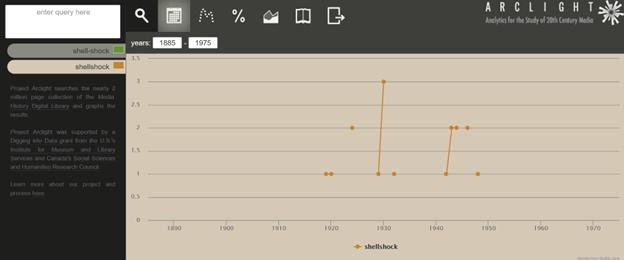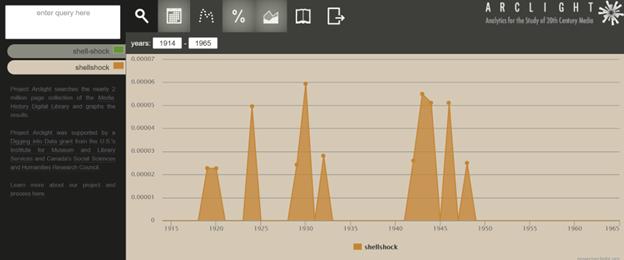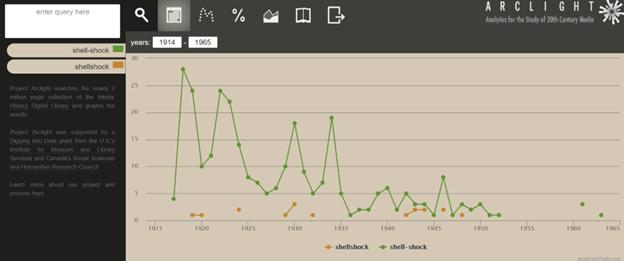Process
Throughout this project, I hoped to include a number of case studies, applying both close reading and distance reading to my chosen texts. Throughout the process, I was stymied by a number of issues, such as availability of plain-text files. Thus, I decided that it would be helpful to provide a number of case studies, which not only model texts, but provide an overview of repositories with open-access texts, in order to prioritize availability of texts for modelling.
I chose to focus on the Media History Digital Library, a “non-profit initiative dedicated to digitizing collections of classic media periodicals that belong in the public domain for full public access" which includes "digital scans of hundreds of thousands of magazine pages from thousands of magazine issues from 1904 to 1963"). I chose this tool because my overall project deals with popular culture representations of shellshock, and this library includes film journals and publications. This form of data visualization and analysis appealed to me, as I hope to make the history of shell-shock in popular media and culture more visible in my archive project.
I opened their tool https://search.projectarclight.org/ from the top menu. The sidebar describes Project Arclight as follows: “Project Arclight searches the nearly 2 million page collection of the Media History Digital Library and graphs the results. Project Arclight was supported by a Digging into Data grant from the U.S.'s Institute for Museum and Library Services and Canada's Social Sciences and Humanities Research. Council.” The form which Project Arclight uses to graph the results is on a timeline, showing instances of a term across a chronological span of time.
I queried the term “shell-shock,” which returned the following result for the term across the years 1885-1975, spanning the breadth of the digital archive.
I also applied the “stack series” filter, so that my results (within the years 1885 and 1975) to aid in visually representing the terms throughout the search engine.
Applying ArcLight’s native tools, I applied the “maximum hits” tool, revealing that most of the results occurred between the years 1917 and 1952.
I then isolated between the years 1914 and 1965 to limit my scope to the years I was most interested in. My hypothesis was that the term would arise after 1914, when it was coined in the pages of the Lancet (Myers 1914). I also expected that the term would peak in usage during and after the first world war, and would experience a resurgence during the second world war.
I then filtered by normalized data, between 1914-1965, and filtered by a stacked series, returning this result:
Remembering that the term “shellshock” was used interchangeably in popular culture, I also searched “shell-shock between the years 1885-1975, returning the following result:
Isolating by maximum hits, I saw that this data followed a similar trend, appearing between the years 1919-1948. I isolated it as a stacked series here:
I toggled both search terms so that they appeared as a simple timeline search.
